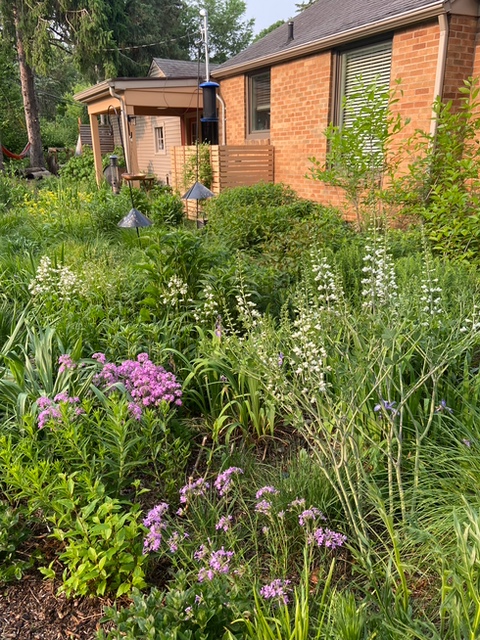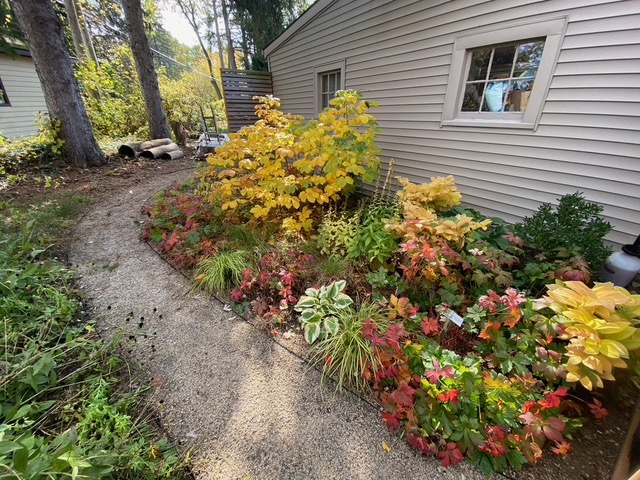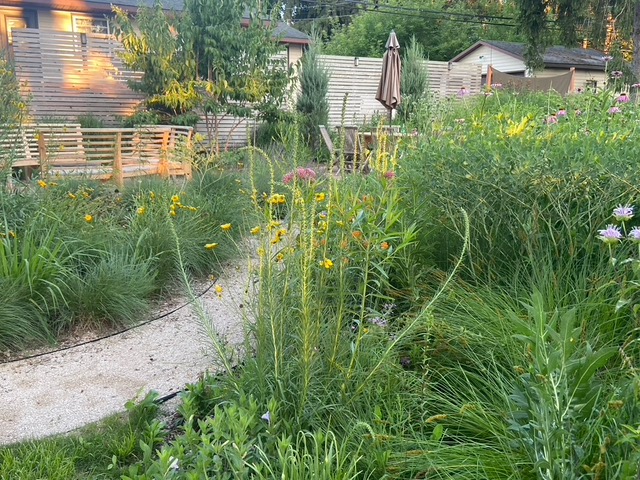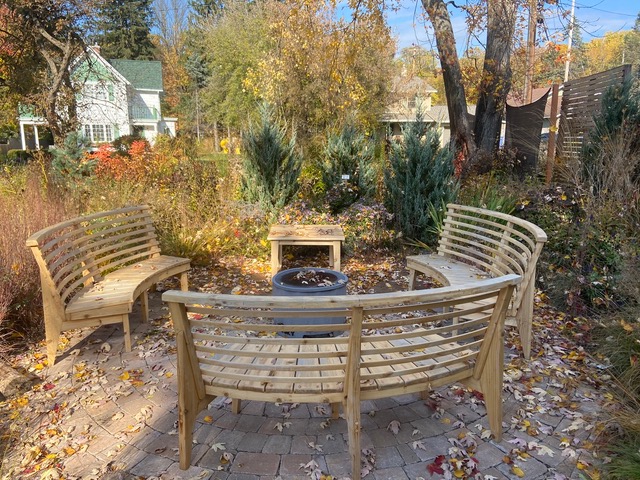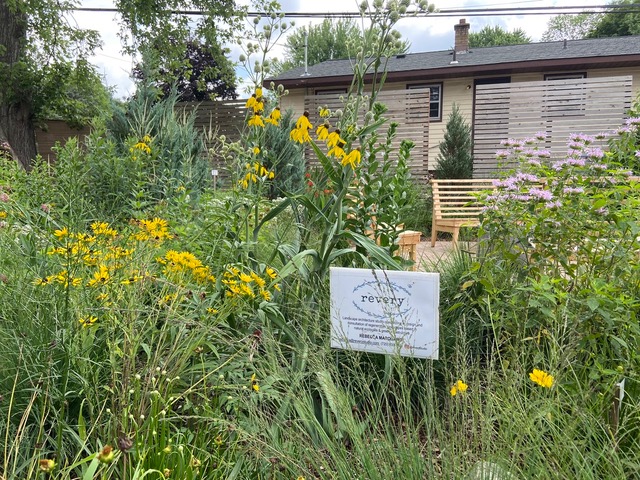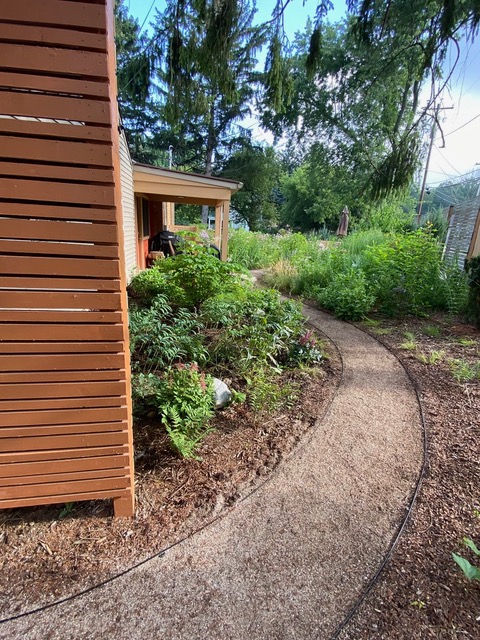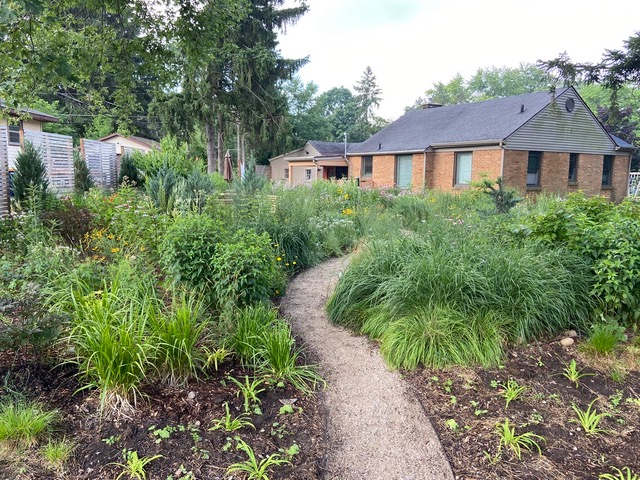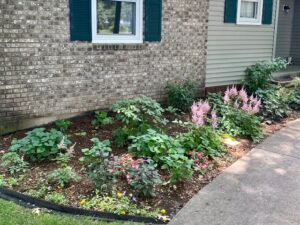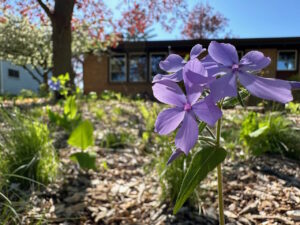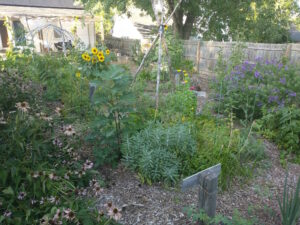After moving into the property, two conjoined lots with a lovely little “mid-century modern” brick bungalow, Bernie, a Master Gardener with extensive gardening experience at his former home in Portland, OR, had to deal with a mostly unkempt, under-maintained, and in some places downright ugly landscape. As part of his “extreme landscape makeover” (the house was fine and needed very little) he engaged the services of a landscape architect, Rebecca Marquardt, who championed the creation of beautiful landscapes containing mostly native plants. Bernie’s design sensibilities and amateur woodworking skills, especially in outdoor garden structure made a nice complement in working together. They found they shared many ecological, aesthetic, and urbanist values and have continued to work together ever since in creating beautiful and ecologically sustainable landscapes.
Rebecca and Bernie share an affinity for the New Urbanist movement; Rebecca even lived in such a development for several years in Denver. Serendipitously they also shared a high regard for, and had independently been inspired by, the work of the world renowned Dutch plantsman, Piet Oudolf, who was the lead designer for the Lurie Garden in Chicago, the High Line in New York City and most recently the eponymous “Oudolf Garden Detroit” on Belle Isle Park.
They also share the value that, as much as landscapes and the gardens within them ought to provide native habitat for birds, butterflies and bees, as with any good architecture, their primary purpose is to promote and engender human flourishing.

